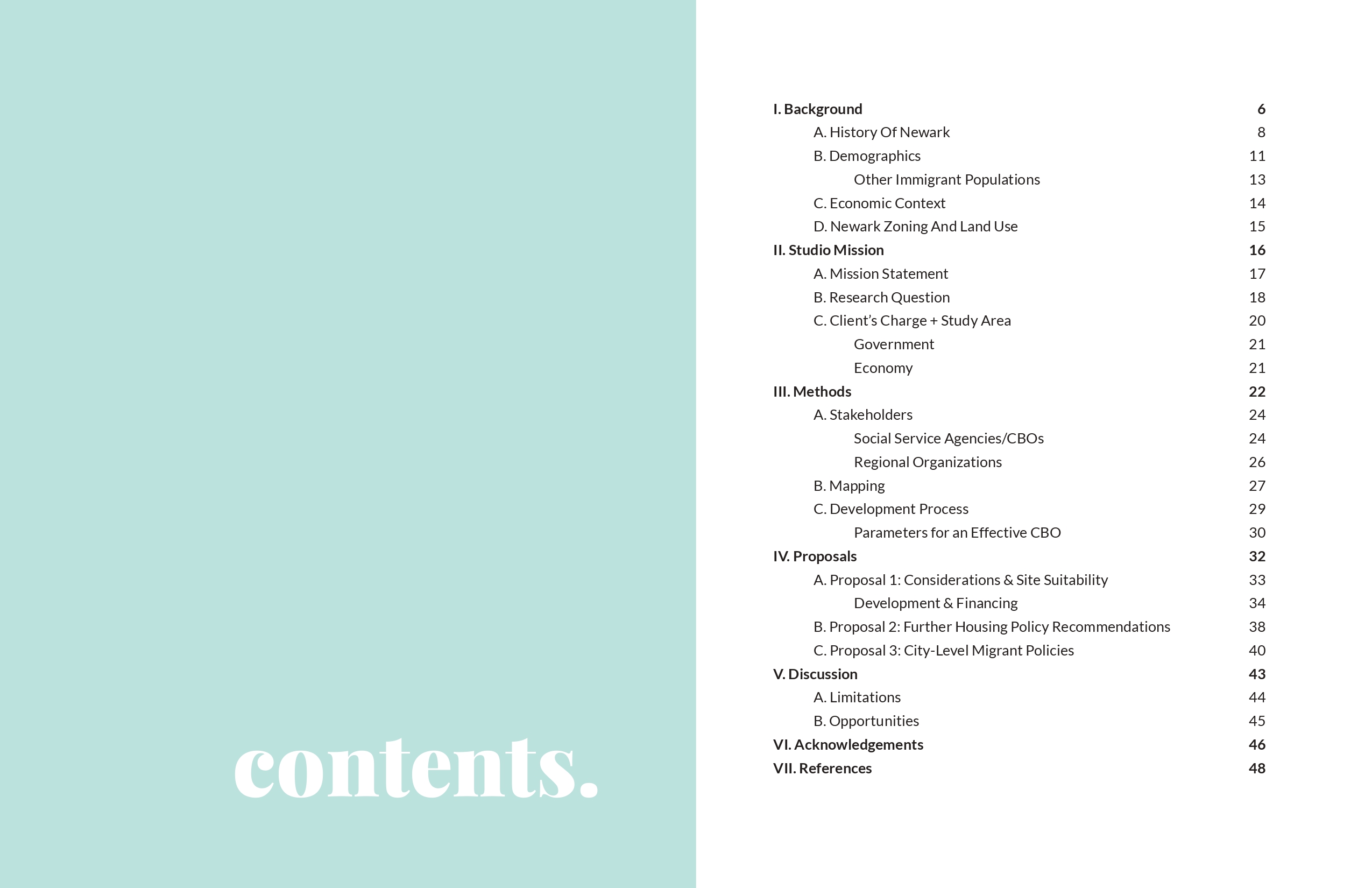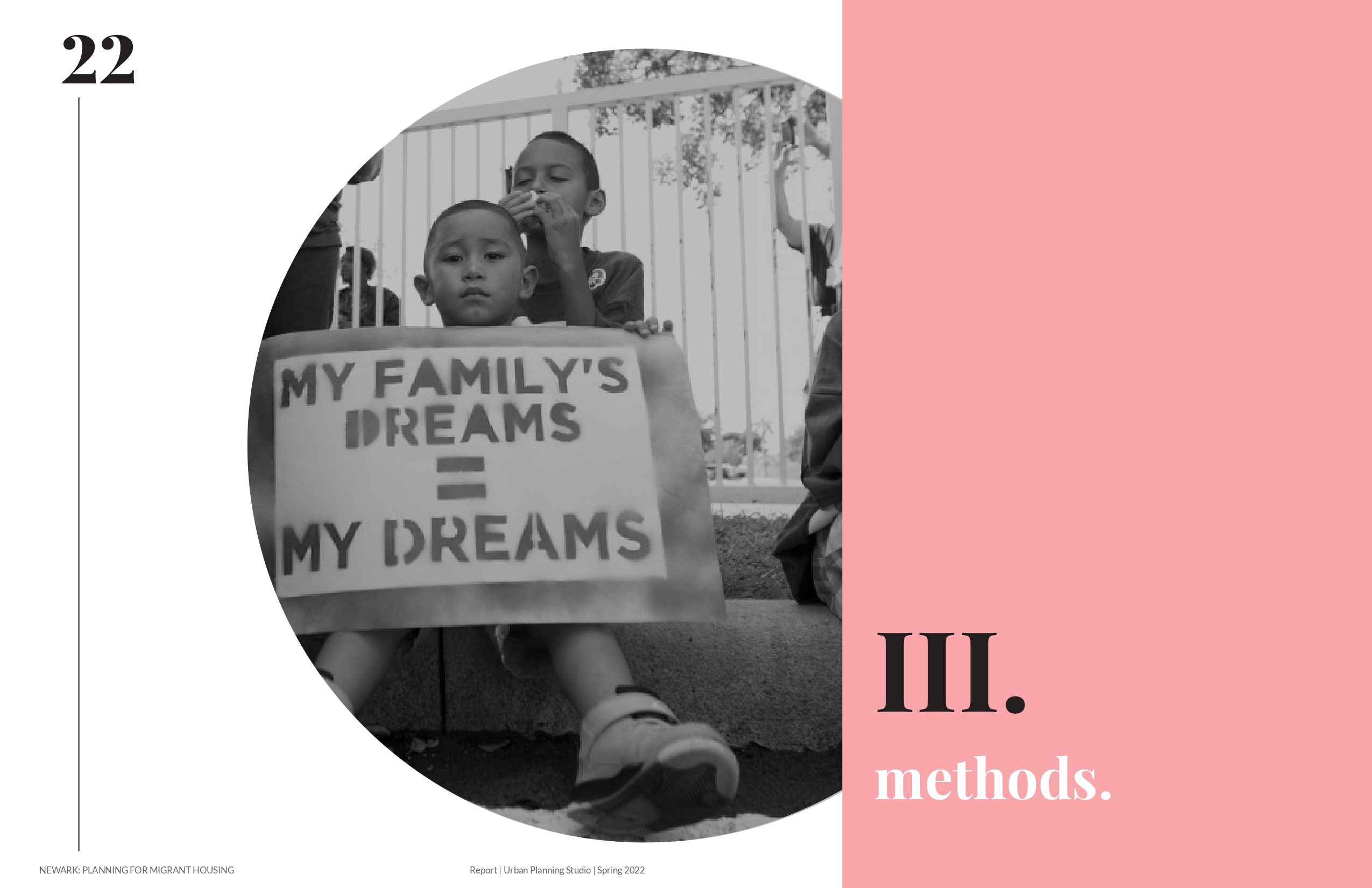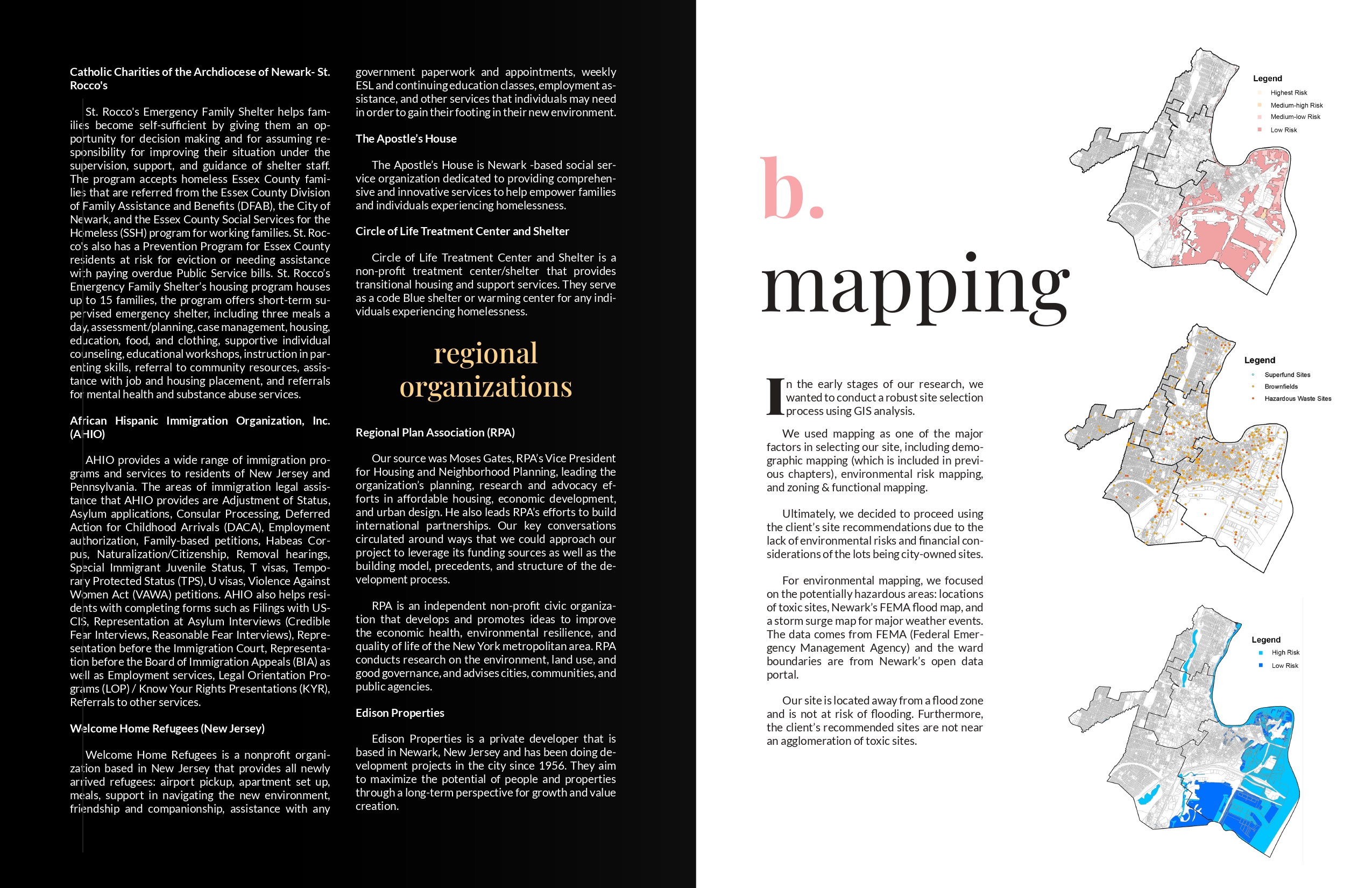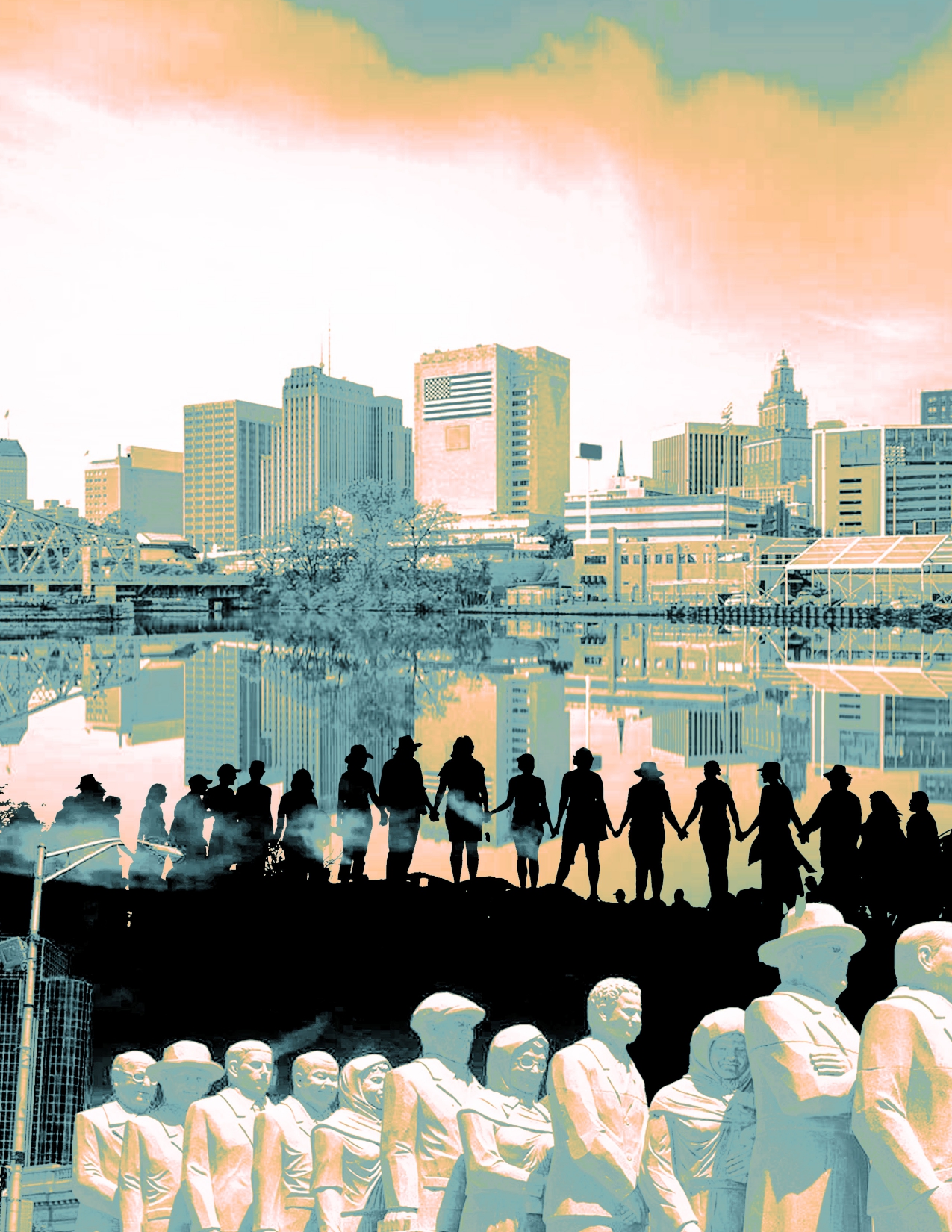Studio: Planning for Migrant Housing in Newark
Spring 2022
Urban Planning Studio
Columbia GSAPP
Spring 2022
Urban Planning Studio
Columbia GSAPP
Newark has long been a city of immigrants fighting for their place in the United States. As the most populous city in New Jersey, where nearly one out of every four residents is an immigrant, Newark has the largest immigrant population in the state, making up 32.5% of the city’s total population. In 2017, Mayor Ras Baraka signed the Executive Order A Fair and Welcoming City, turning Newark into a sanctuary city.
To show his support for immigrant communities, this provided equal protection from police discrimination and police profiling to all undocumented folks, allowing them identification cards, driver's licenses, and documentation needed to access basic city services. This order sent a clear message that the city of Newark wants its immigrant residents to live and work without fear, and to be treated with dignity and respect. Such a proclamation honors the city’s history and sets a precedent for its future. This policy, however, does not specifically address housing needs.
Just as immigrants made Newark what it is, they are also a crucial part of what it can become. The studio, titled “Planning for Migrant Shelter in Newark,” addresses the concept of housing, instead of a shelter, to explore different options for Newark360, the decennial update to the city’s master plan, which has three main priorities: health, equity, and resilience. The client for this project is Christopher Watson, the director of City Planning for the City of Newark, who requested to maintain a broad approach for migrant shelters.
This proposal seeks to aid the City of Newark to implement a replicable model for providing decent, dignified housing to migrants in vulnerable situations to help them establish themselves in the city.
In this context, the concept of vulnerability is understood as both situational and personal. It is important to highlight that migrants are not inherently vulnerable. Rather, vulnerability to economic oppression and human rights violations is the outcome of many intersecting forms of discrimination, inequality and structural dynamics that lead to unequal power relations. In order to guarantee that every migrant is able to access appropriate protection of their rights, the situation of each person must be assessed individually.


























Project by Victoria Lin, Michelle Chen, Kirthi Balakrishnan, Ariana Bon-Hodoyán, Nabila Fisra Hawali, Lizzie Lee, Calvin Harrison, Robert Sanchez, Geryel Osorio Godoy, Rozette Adriano De Castro & Zhaoxuan Duan
Course by Professor Maxine Griffith & Professor Nilda Mesa